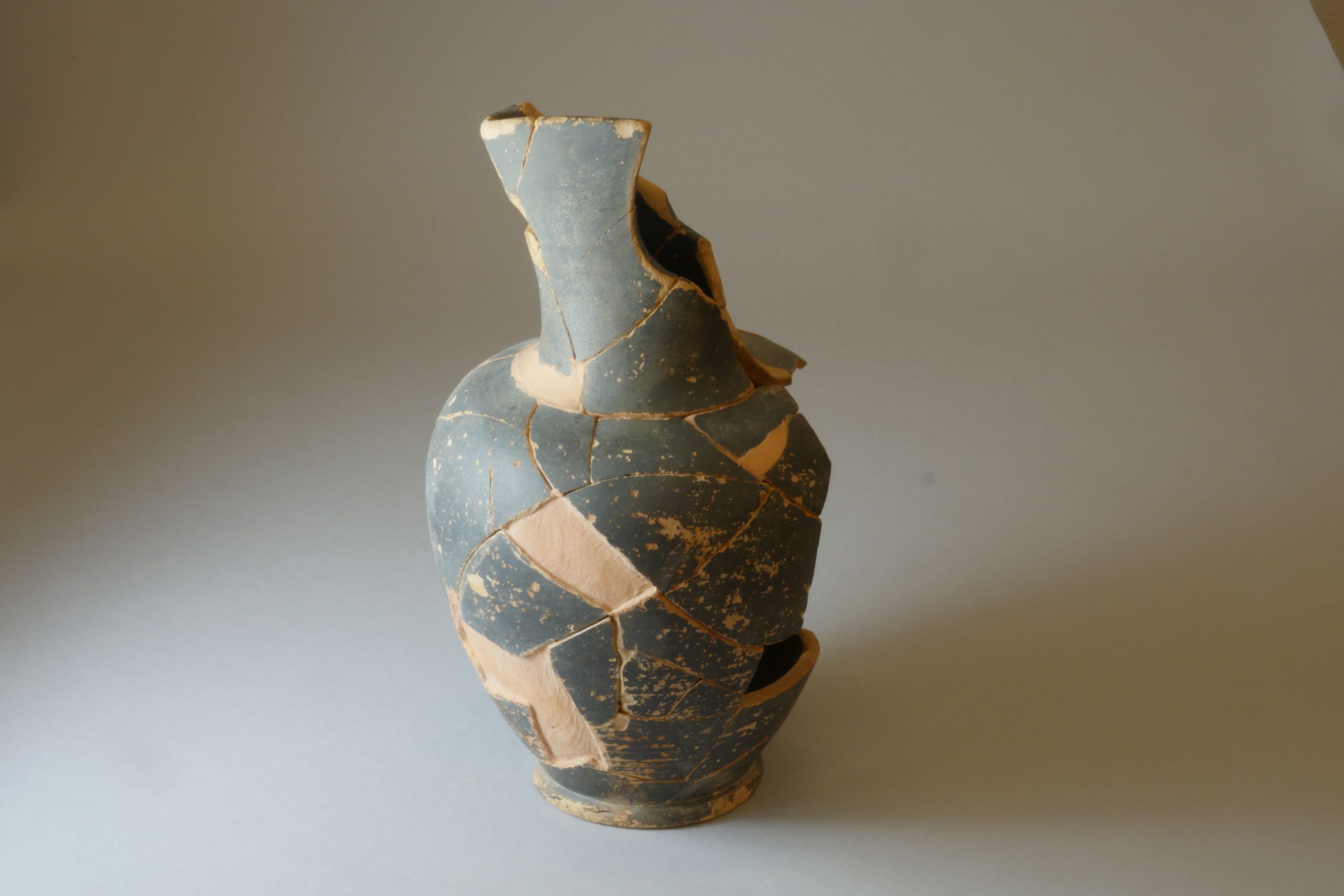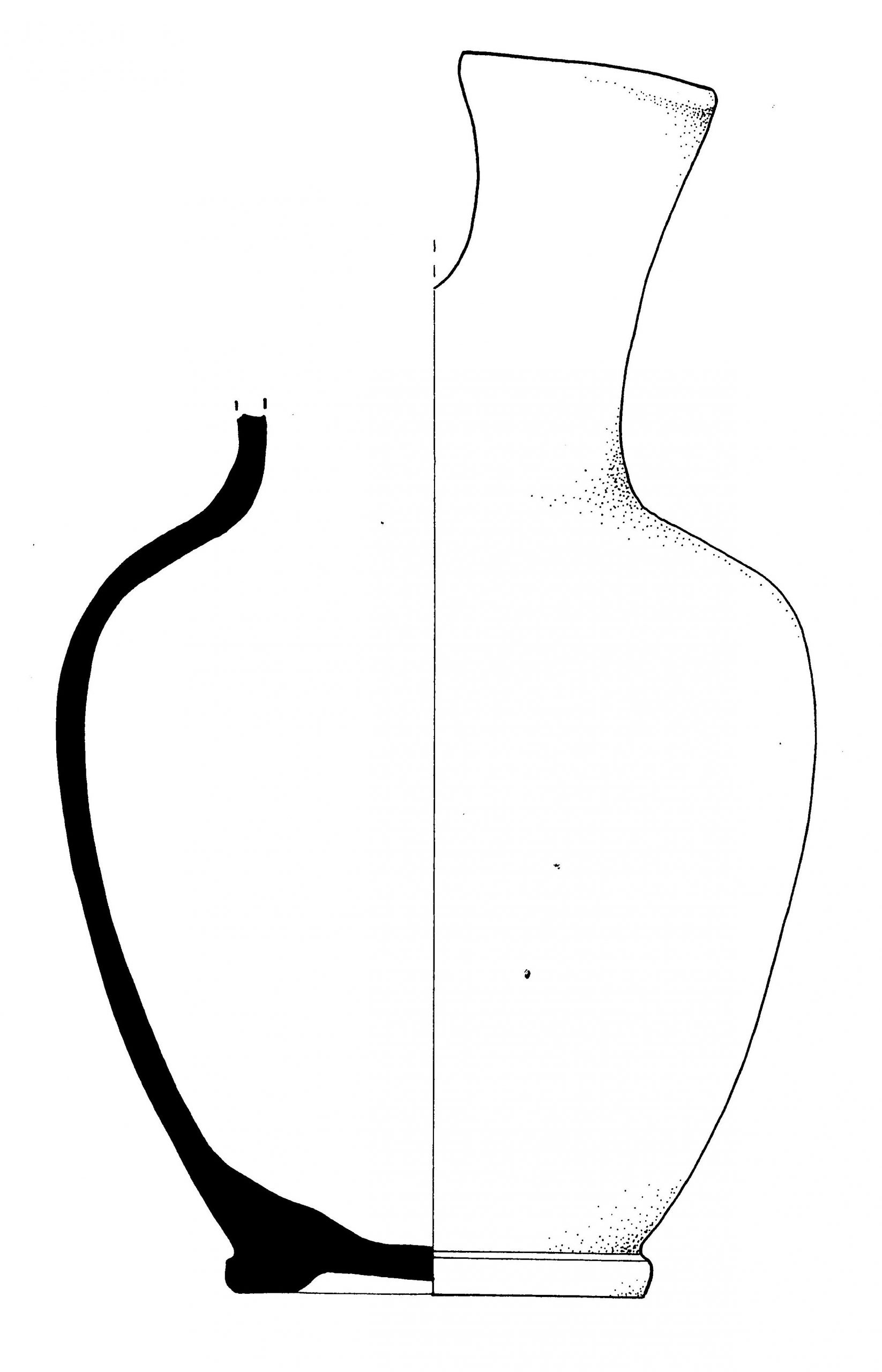
Etruscan Cetamura
Black-Gloss Pitcher
Period | Etruscan |
Year | 3rd c. BCE |
Material | Ceramic |
Location | Well #1 |
Cet. Inventory | Inv. C-13-1352 |
This Etruscan pitcher may have been used to draw water from the well (though it is rather small). It dates to the 3rd c. BCE but was found in a well deposit of a later date, probably from a dumping episode.
Prov. 5N/18W.103.1. H. 20. Diam. of base: 6.8. Wt. 360 g. Munsell: 7.5YR 6/6 “reddish yellow” (paste); GLEY 2 3/1 5B “very dark bluish gray” (slip)
Black-gloss pitcher reconstructed from 41 fragments. Body shape is ovoid with a narrow-pinched spout that widens towards the handle side, with finished surfaces both on the top rim and along the curved back edge. Approximately 80% of the pitcher is present, including most of the spout and shoulder, much of the wall of the body, and intact ring-foot base; the handle and surrounding body wall, one section of the spout, a few pieces of the body wall, and miscellaneous chips are missing. Both the exterior and interior surfaces are glossed and bear visible wheel marks. The gloss on the exterior is fugitive and worn to a matte finish; on the interior the gloss is mostly intact and darker in color. Around the perimeter of the vessel just above the base are four areas of circular or swirled patterns of a reddish-orange color with visible fingerprints, possibly indicative of how the vessel was held by the artisan as it was dipped into the color coat.
Comparanda of Volterran manufacture date to the 3rd c. BCE. A specimen from S. Martino ai Colli (Barberino Val d’Elsa) has an identical ring-foot base (3rd c. BCE).
Dating: 3rd c. BCE. Found in Well Group III (ca. 150–100 BCE).
Bibl.: Morel 5731a.3 for the spout. Cianferoni 1984, 78 (cat. no. 74) for the foot.





